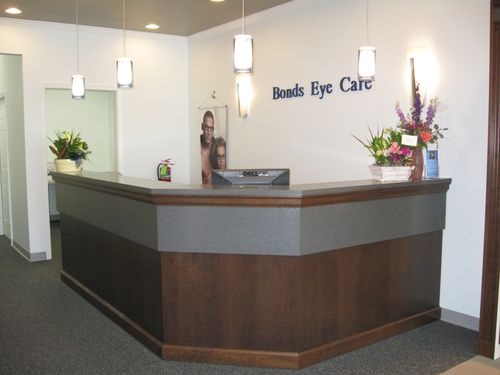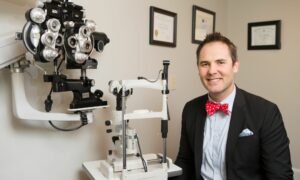By Victoria L. Dzurinko, OD, FAAO
SYNOPSIS
Patients find compliance is easy when you prescribe one-day and one-month replacement contact lenses. Compliant patients are more comfortable in their lenses—and more profitable to your practice over time.
ACTION POINTS
SIMPLIFY COMPLIANCE. Present the simplicity of one-day and one-month replacement.
BE REALISTIC. Patients often stretch two-week lenses into a month’s wear, so offer a lens made to be worn for one month.
REINFORCE MESSAGE. Have staff review the benefits of one-day and one-month lenses in terms patients understand.
Patients love the convenience and freedom that contact lenses offer over glasses. But many patients can’t tolerate the lens wear and care routine. This leads to contact lens dropouts, and practices (often unknowingly) lose patients that are highly profitable to the practice over the long-run.
There is a simple remedy to minimizing these contact lens dropouts: contact lenses with one-day or one-month replacement cycles. Patients find it easier to remember to change their lenses once a day or once a month, making compliance more likely. When the proper wear and care schedule is adhered to, patients are more comfortable, making long-term wear more likely.
Patients who are able to stay in their contacts comfortably long-term are profitable to an optometric practice. First, they are satisfied and refer others. Many of these patients often purchase contacts, as well as glasses. In addition, they come in at least once a year to renew their prescription. For all of these reasons, one-day and one-month contact lenses are my lens modality of first choice.
Victoria L. Dzurinko, OD, FAAO
Bonds Eye Care
Downingtown, Penn.
Optometry School: Pennsylvania College of Optometry, class of 2002
Practice Locations: 1
Doctors: 2
Support Staff: 3
Comprehensive Exams: 1,500 annually
Revenues: $600,000 annually
One-Day & One-Month: Better for Patient and Practice
The expense of contact lens inventory to a practice comes not from “box price,” but from patient compliance. If a patient is not compliant with the two-week modality, they are either buying fewer than eight boxes or stretching eight boxes well beyond 12 months. How Compliant are Contact Lens Wearers?, a study by Kathryn Dumbleton on contact lens compliance, found that 88 percent of one-day patients and 72 percent of monthly patients were compliant, while less than half of two-week patients (48 percent) were found to be compliant with the manufacturer’s recommended replacement frequency.
Since I prescribe lenses bases on the MRRF, these compliance numbers give me a good idea of what fitting these modalities can mean to my practice. I want to invest in products that will give me the best return. With less than half of patients typically compliant in a two-week modality, that doesn’t seem like a very smart investment.
What’s more, it isn’t just about making more profit per box. Even if you set all lenses to have equal profit per box, the modalities that put patients back in the chair as close to every 12 months as possible are the lenses that are more profitable to the practice. One-day lenses have historically, and in my clinical experience, done this the best followed closely by monthly. If a two-week patient is non-compliant, we are faced with two issues: they buy less than a year supply or they buy the “year supply” and stretch it to two years, and we lose profitability in both cases.
Think Simplicity: Match Patient’s Behavior
Patients like the simplicity of one-day and one-month contacts. It’s easy to remember to throw them out every day, or the same day every month. Even “two-week” patients adopt this philosophy without even realizing it. As a clinician, it is better to start with the modality that matches the patient’s real behavior.
It also is important to match the contact lens modality to a patient’s lifestyle. Children and adolescents do well with single-use lenses because the care and replacement regimens are equally simple: wash your hands before you touch your lenses and throw the lenses out every day. College students are great candidates for both daily and monthly replacement lenses, as well. They can stay with the convenience of a daily-replacement, or benefit from the extended wear flexibility of monthly replacement lenses.
Make One-Day or One-Month CLs Your First Choice
The two-week modality is my third choice. I don’t start new wearers and I don’t refit current contact lens wearers in the two-week modality. Around 10 percent of my patients are still in two-week lenses out of necessity, as I was unable to find a one-day or one-month lens to accommodate their vision needs. About 30 percent (and ever-increasing) of my patients are in one-day lenses. Over 60 percent are in one-month lenses.
Making the Switch: Have the Conversation
Here is a sample script of the conversation I might have with patients on why they should switch to a one-day or monthly replacement contact lens.
Patient over-wearing two-week lenses
Doctor: “Jane, you’ve said that you wear your two-week lenses for a month anyway, so I was thinking it might be better to switch you to a lens that was designed to be worn for a full month and then just thrown away. What do you think?”
Patient: “Sure, I’ll give it a try.”
Result: Usually the patient will be OK with my suggestion, and find that she likes the one-month lens at least as much, if not more, than her over-worn two-week lens.
Patient Uncomfortable in Lenses
Doctor: “Contact lenses should never feel ‘bad.’ If they do, we either need to adjust the cleaning regimen or the lens material. You should not experience a big increase in lens comfort when you change from an old pair to a new at the end of your wearing cycle. Discomfort is the eye’s way of warning us that something on the ocular surface is out of balance.
Patient: “Is it really that serious? I mean I can put up with a little discomfort if it means I’ll save some money.”
Doctor: “You don’t want to do that because it puts you at higher risk for a contact lens-related adverse event. The cost to treat one contact lens-related corneal issue far outweighs any perceived savings you may get from over-wearing a lens. Remember, office visits and prescription medication have co-pays that can become pretty pricey, so stretching that lens to save at most $17 (the price of an average pair of monthly lenses) is really not worth it.”
Result: The patient usually will acknowledge it’s not worth risking their eye health and the resulting high costs to treat potentially serious complications.
Have Staff Reinforce Message & Talk About New Modalities
Our staff reinforces our message of compliance and the benefits of purchasing a year supply through us. The staff is very well versed in knowing why we choose the lenses we do. It is so important that the patient receive the same messaging multiple times from both us and our staff.
Be honest and non-judgmental with patients. Don’t be afraid to talk about new options even with “happy” patients. Let them know that contact lenses are great medical devices that offer freedom from spectacles. However, it is important to wear them properly. We have so many options today that we can find a lens that fits almost any patient’s lifestyle. It is just a matter of getting patients to open up about how they are truly wearing their lenses and what their true wearing experience is. Don’t talk about “box cost;” talk about the value of each new material, as well as the daily and monthly modalities.
Related ROB Articles
One-Day and One-Month Replacement CLs: Compliance Booster
One-Day, One-Month Replacement CLs: Enhance Compliance, Decrease Dropouts
Overcome the Cost Barrier: Move More Patients Into Daily Replacement CLs
Victoria L. Dzurinko, OD, FAAO, is an associate at Bonds Eye Care in Downingtown, Penn. To contact: vdzurinko@gmail.com



























